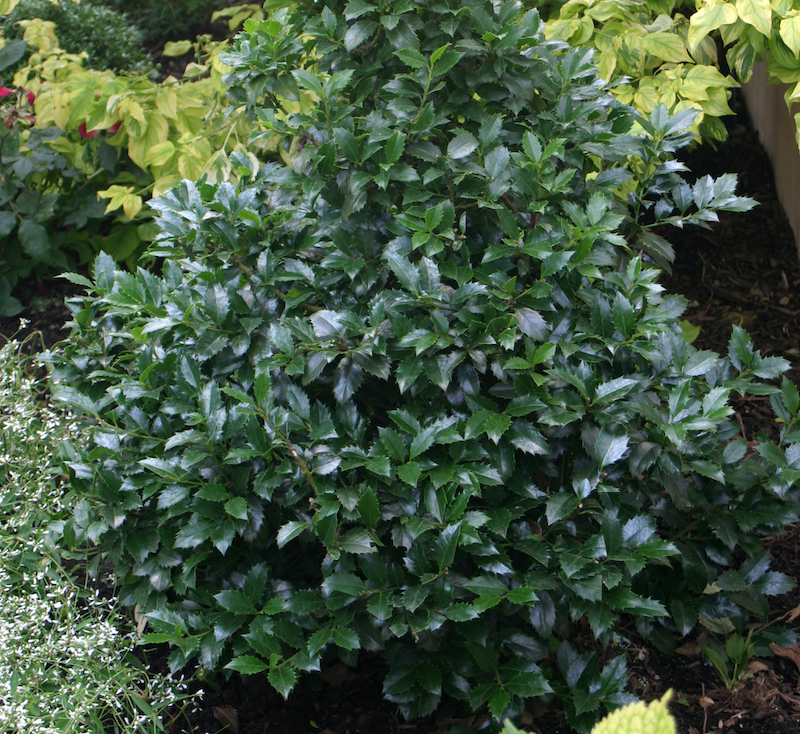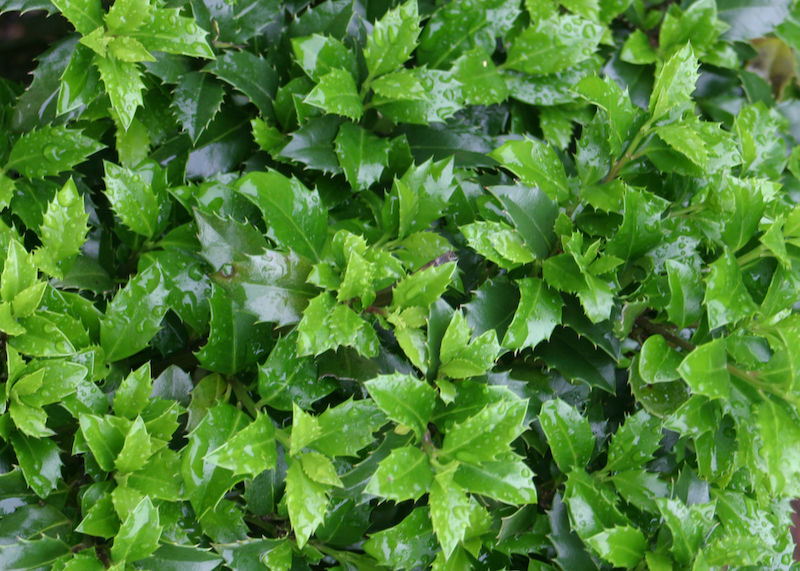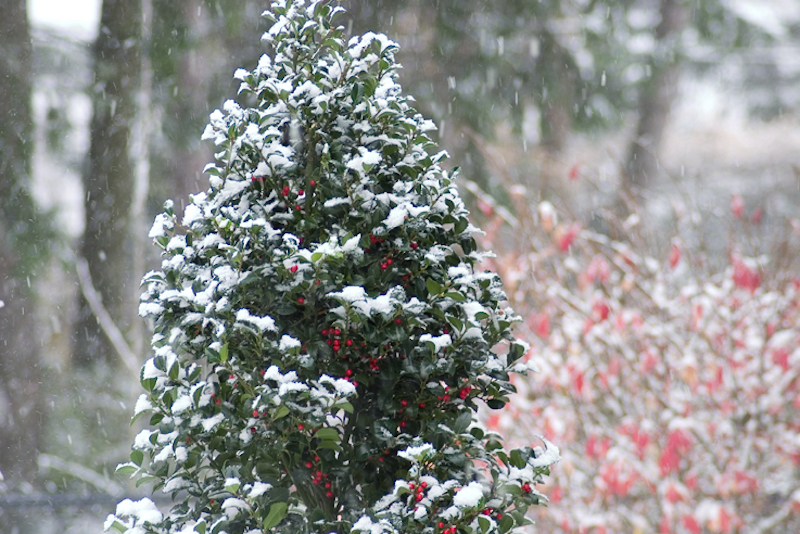Growing Blue Holly
Blue Holly is a broadleaf evergreen shrub that provides color year-round and makes a festive addition to a landscape during the winter. Use this plant as a specimen planting or create a hedge or foundation planting. The woody branches are covered in glossy, dark green foliage with a hint of blue. The leaves are moderately spiny.
Blue Holly features small white flowers in the spring that later give way to bright red berries by winter. Blue Holly is available in female and male shrubs; only the female produces berries after male trees fertilize the flowers. Shrubs can reach 10 to 15 feet tall and 8 to 10 feet wide, depending on the cultivar. This perennial grows in zones 3 through 7.

Planting Blue Holly
Plant Blue Holly during the early fall in warm regions so the roots have time to develop before the summer heat kicks in. Plant during the spring in areas with cold winters. This shrub prefers full to partial sun, but avoid planting it in areas that receive afternoon sun in hot regions. The soil should be moist, well drained, and have an acidic to neutral pH.
Watering Blue Holly
Deeply water Blue Holly plants during the first growing season. Routine watering establishes a robust root system. Water weekly after the plant is acclimated. Plants may need more water during a dry period. Shrubs grown in bright sunlight, especially in warm climates, will likely need water more often. The soil should be moist but never soggy.

Fertilizing Blue Holly
Proper nutrition ensures the plant grows shiny leaves, sets flowers, and ultimately producers bold red berries. Blue Holly is not a heavy feeder, but amending the soil with organic compost during planting will set the plant up for success. Apply a balanced fertilizer, with an NPK ratio of 10-10-10 or something similar, during the spring or use a product formulated for holly plants.
Pruning Blue Holly
Blue Holly plants respond well to pruning and can be trimmed to maintain a specific size. Blue Holly blooms and sets berries on old wood, so avoid removing new growth when possible to ensure abundant flowers next year. Stagger cuts when pruning to maintain a more natural and less severe look. When to prune is a matter of preference. Prune in early winter if you want to use the berry-laden stems in holiday decor. If you're going to display the berries on the trees for long-lasting winter interest, then prune Blue Holly in late winter.
Caring For Blue Holly in Pots
Growing Blue Holly in containers allows for flexible placement options, so the shrubs can be placed front and center when the branches are covered in berries. Place the potted plants near an entryway or a highly visible area, so the lovely greenery and fruit can be admired. Blue Holly has a shallow root system, so the ideal container will be wider than deep. Select a container with drainage, preventing the soil from becoming waterlogged.
Winter Care for Blue Holly
Blue Holly shrubs have a shallow root system, and plants grown in the Northern zones will benefit from a thick layer of organic mulch spread around the base. The mulch will passively feed the shrub and insulate the roots from cold winter weather.

 |
Author Alison Cotsonas - Published 02-06-2023 |
